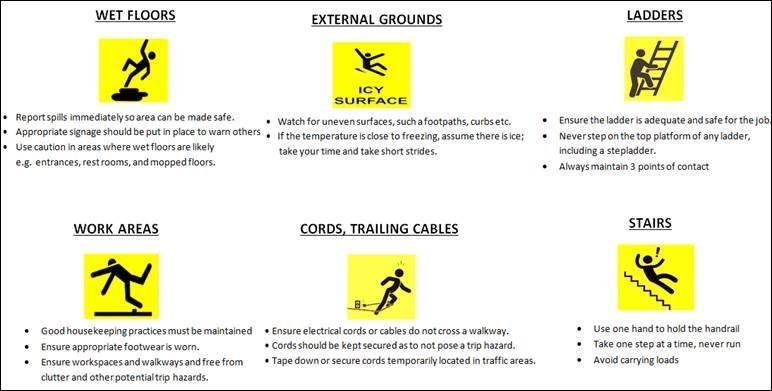
Although it does not talk specifically about the shipboard environment, many of the STF risks are similar across industries. The International Labour Organization (ILO) and the UK Health and Safety Executive (HSE) have developed an online course for managing slips, trips and fall hazards. Such a common sense approach should become second nature. Recovery from these injuries can be slow and have long-term effects on work. can help in greatly reducing the risk of an injury occurring. The most common injury associated with a slip, trip or fall is a sprain or strain. In addition, training our eyes to always look out for STF hazards, such as unguarded openings, loose cables, oil on deck etc. creating a visual workplace such as by using safety signage.
#Slips trips and falls code#
The Code of Safe Working Practices (COSWP) recommends various good practices to reduce the risk of personal injuries as a result of STFs, such as: Amongst ratings, nearly 40% of all STF injuries have been to able bodied seamen (ABs), while among officers, chief officers and chief engineers combined account for 40% of all such injuries. STFs can cause various types of injuries, from a less severe sprain to more serious back injuries and fractures, and sometimes even fatalities.

We see that ratings are 60% more likely to be injured through STFs related causes compared to officers. In their Annual Overview of Marine Casualties 2019, the European Maritime Safety Agency (EMSA) also noted that STFs are the most frequent causes of personal injury.Īre all ranks susceptible to STF related injuries? The answer is yes, although some ranks feature more than others.



Conduct regular workplace inspections to Identify hazards.Light on a shiny floor causing glare, too little light, rainwater or condensation getting onto flooring, spills.ĭamp floors after cleaning, trailing cords from a vacuum cleaner.Īdapted from OHS in Schools (WorkSafe Victoria) Strategies to reduce the risk of injuries from slips, trips and falls Wearing inappropriate footwear, students and staff rushing about or carrying large objects. No suitable walkway through work areas, trailing cords, obstructions, untidy floors around work stations and inadequate storage space, liquid spills, loads that obstruct vision. Low visibility, no suitable handrail, steps of uneven height, steps of varying width, poorly maintained coverings or surfaces. Unsuitable, slippery, dirty, not correctly fitted, not maintained, changes of level that are not highlighted, incline of a ramp, change from wet to dry surface, worn coverings or broken tiles, potholes and cracks in floors. This guideline has been developed to assist schools to reduce the risk of injury from slips, trips and falls for all staff, students and others on the school site.Ĭommon causes of slips, trips and falls in schools Flooring Slips, trips and falls are one of the most common causes of injuries in schools resulting in a variety of injuries including fractures, cuts and bruises, and musculoskeletal injuries. Slip and fall dangers are present in every workplace.


 0 kommentar(er)
0 kommentar(er)
